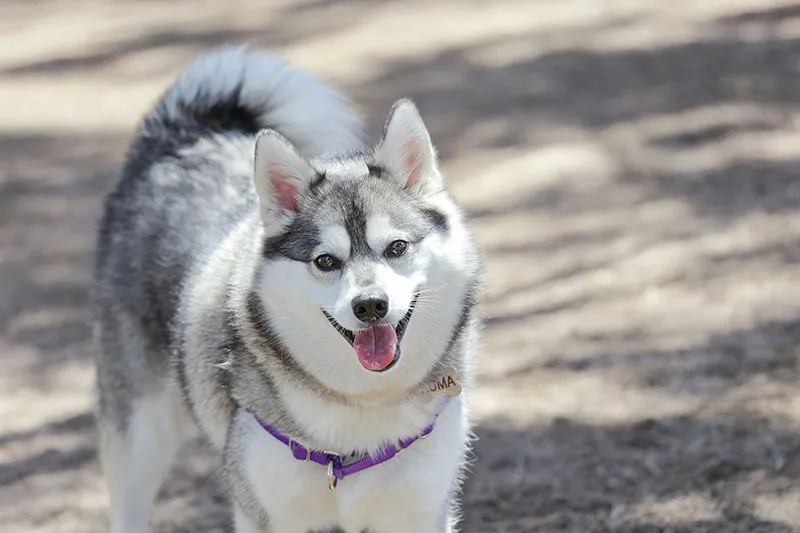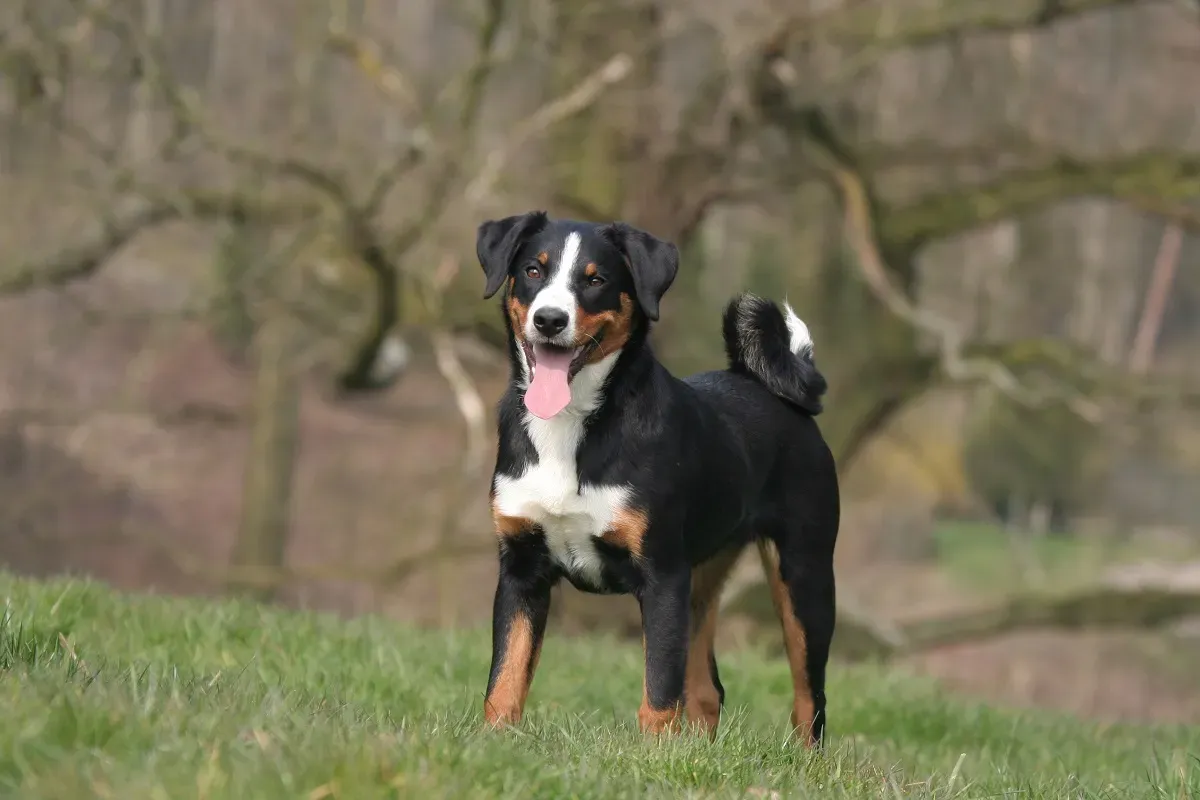
Alaskan Klee Kai
Heena
June 19, 2025

The Alaskan Klee Kai is a small, intelligent, and eye-catching breed that closely resembles a Siberian Husky—but in a much smaller, more manageable size. With its wolf-like appearance, upright ears, curled tail, and energetic personality, this dog has captured the hearts of pet lovers who want the Husky look without the large size or overwhelming energy levels. Originally bred in Alaska during the 1970s, the Alaskan Klee Kai has quickly grown in popularity as a companion dog that is both loyal and alert.
Despite their striking appearance, this breed is more reserved and sensitive compared to its larger cousins. The Klee Kai makes a great fit for active individuals, couples, and families who can match their energy and need for interaction.
🐶 Quick Facts: Alaskan Klee Kai at a Glance
Trait | Description |
Origin | Alaska, USA |
Breed Group | Companion Dog |
Size | Toy, Miniature, and Standard |
Weight | 5 to 22 lbs (2.2 to 10 kg) |
Height | 10 to 17 inches (at the shoulder) |
Lifespan | 13 to 16 years |
Coat Type | Double coat, medium length |
Colors | Black & white, gray & white, red & white |
Temperament | Loyal, alert, intelligent, reserved |
Energy Level | Moderate to High |
Good with Kids | Yes, if socialized early |
Trainability | Very trainable, quick learners |
Shedding Level | Moderate to heavy |
📖 History and Origin
The Alaskan Klee Kai was developed in the 1970s by Linda Spurlin, who wanted a smaller version of the Alaskan Husky that would be better suited for companionship rather than work. She accomplished this by selectively breeding Huskies with smaller breeds like the American Eskimo Dog and Schipperke. The name “Klee Kai” is derived from an Inuit term meaning “small dog.”
Though the breed is relatively new, it has quickly developed a loyal fan base. In 1997, the United Kennel Club (UKC) officially recognized the Alaskan Klee Kai as a distinct breed in its Northern Breed group.
🐕 Appearance
The Alaskan Klee Kai looks like a miniature wolf or Husky. It comes in three size categories:
Type | Height (at shoulder) | Weight |
Toy | Up to 13 inches | Up to 10 lbs |
Miniature | 13–15 inches | 10–15 lbs |
Standard | 15–17 inches | 16–22 lbs |
Their features include:
- A fox-like face
- Upright triangular ears
- Almond-shaped eyes (blue, brown, or both)
- A curled bushy tail over the back
- A double coat with distinct facial masks and markings
The most common coat colors include black & white, gray & white, and red & white, with solid white being rare and less favored in show standards.
💬 Temperament
Alaskan Klee Kais are known for their loyalty and strong bond with their family. They’re often described as:
- Alert and observant (excellent watchdogs)
- Reserved with strangers
- Playful with loved ones
- Clever and sometimes mischievous
Unlike the outgoing Siberian Husky, the Klee Kai tends to be more sensitive and cautious, which makes early socialization very important. They do best in calm households that can offer mental and physical engagement.
🏃 Exercise and Activity Needs
Despite their small size, the Alaskan Klee Kai is an active and energetic breed that thrives on exercise.
Recommended daily activities:
- 45–60 minutes of walks or playtime
- Puzzle toys and agility games for mental stimulation
- A fenced yard is ideal, but apartments are fine with regular walks
They enjoy interactive games and may excel in dog sports like agility, obedience, or even nose work.
🧼 Grooming and Maintenance
The breed’s double coat is beautiful but comes with a moderate to high shedding level, especially during spring and fall.
Grooming tips:
- Brush 2–3 times per week (daily during shedding seasons)
- Bathe once every 4–6 weeks (unless dirty)
- Trim nails monthly
- Clean ears and brush teeth weekly
Alaskan Klee Kais are naturally clean and often groom themselves like cats. They have little to no doggy odor, which is a bonus for indoor living.
🎓 Training and Intelligence
This breed is very intelligent, and they respond well to positive reinforcement training. They pick up commands quickly but can also be a little independent.
Training recommendations:
- Start early socialization (puppy stage)
- Use reward-based training (treats, praise)
- Be patient and consistent
- Avoid harsh corrections (they’re sensitive)
They enjoy learning and often surprise their owners with how fast they grasp new tricks and routines.
🏥 Health and Lifespan
Alaskan Klee Kais are generally healthy, especially if bought from a reputable breeder. However, like all breeds, they can be prone to certain genetic conditions.
Common health concerns:
- Patellar luxation (loose kneecaps)
- Heart murmurs
- Liver shunts
- Thyroid issues
Lifespan:
With proper care, most Klee Kais live between 13 and 16 years. Annual vet checkups, a balanced diet, and regular exercise help maintain their health and longevity.
👪 Is the Alaskan Klee Kai Right for You?
This breed is ideal for owners who:
✅ Want a small-to-medium-sized dog with a striking appearance
✅ Enjoy daily walks and play
✅ Can provide attention and mental stimulation
✅ Prefer a clean, low-odor dog
✅ Have the time to train and socialize a reserved, smart pup
This breed may not be the best fit if you:
❌ Want a calm, cuddly lap dog
❌ Are away from home for long hours
❌ Need a quiet, low-maintenance pet
❌ Have young kids who might not respect dog boundaries
🧾 Conclusion
The Alaskan Klee Kai is a unique and beautiful breed that brings the look of a Husky into a compact, manageable package. They’re bright, clean, and deeply loyal—but they require time, patience, and proper socialization to truly thrive.
If you’re ready to invest in an active and alert companion, the Alaskan Klee Kai might just be the perfect pup for you.
❓ FAQs About the Alaskan Klee Kai
Is the Alaskan Klee Kai a good apartment dog?
Yes, if exercised daily. Their small size and cleanliness make them suitable for apartments.
Do they get along with kids and other pets?
They can, but early socialization is key. They tend to be reserved and may not enjoy rough play from young children.
Are they loud?
They can be vocal, especially if bored or excited. They “talk” like Huskies and may bark when alert.
Are they easy to train?
Yes, they’re intelligent and eager to please, though they can be a bit independent.
Choose this breed if you want:
- A powerful, dignified protector
- A dog that’s intelligent, trainable, and loyal
- A companion for active households
- A breed with a strong work ethic and calm demeanor
Avoid if you want:
- A low-maintenance or small dog
- An easygoing, independent breed
A breed suitable for apartment living with minimal time commitment

